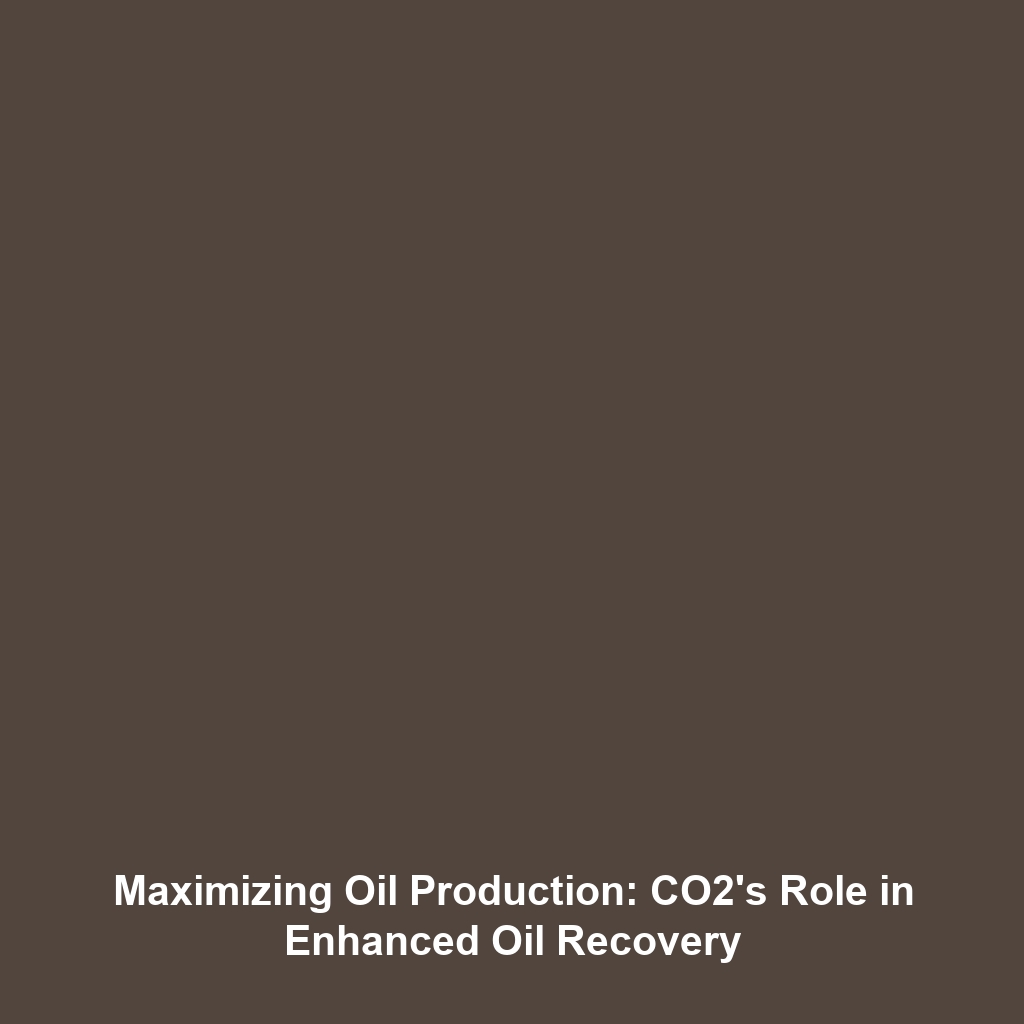Enhanced Oil Recovery (EOR): Using CO2 to Extract More Oil
Introduction
Enhanced Oil Recovery (EOR) using CO2 is a groundbreaking technique in the energy sector that not only maximizes oil extraction but also aligns with global sustainability goals. By injecting carbon dioxide into oil reservoirs, EOR enhances the recovery of crude oil, significantly contributing to Carbon Capture & Storage (CCS) initiatives. This method is pivotal in addressing the dual challenge of meeting energy demands while reducing greenhouse gas emissions. Understanding the significance of EOR in the CCS framework provides critical insights into innovative strategies for sustainable energy production.
Key Concepts
What is Enhanced Oil Recovery (EOR)?
Enhanced Oil Recovery refers to various techniques aimed at increasing the amount of crude oil extracted from an oil field. Among these methods, gas injection, particularly the use of CO2, stands out due to its dual function: enhancing oil recovery and supporting the reduction of atmospheric CO2 levels.
Principles of CO2 Injection
During the EOR process, CO2 is injected into oil reservoirs under high pressure. The CO2 decreases oil viscosity and improves its flow properties, leading to increased oil production. This process is categorized under Carbon Capture & Storage (CCS) as it effectively captures CO2 emissions and repurposes them to enhance oil extraction.
Applications and Real-World Uses
The integration of CO2 in EOR has seen various practical applications, making significant impacts in the field of Carbon Capture & Storage:
- Oil Fields: Numerous mature oil fields, particularly in the United States, have adopted CO2 EOR to optimize oil recovery, showcasing the technique’s effectiveness.
- Carbon Management Projects: Projects such as the Sleipner project in Norway demonstrate large-scale applications of CCS, where captured CO2 is strategically utilized for EOR.
- Enhanced Production Rates: Fields using CO2 EOR have reported production increases of up to 15-20%, significantly contributing to energy needs while supporting CCS initiatives.
Current Challenges
Despite its benefits, several challenges in studying and applying Enhanced Oil Recovery (EOR) using CO2 persist within the broader scope of Carbon Capture & Storage (CCS):
- Economic Viability: The high cost of capturing, transporting, and injecting CO2 can limit the feasibility of EOR projects.
- Technical Limitations: Variability in oil reservoir properties can affect the efficiency of CO2 EOR processes.
- Regulatory Challenges: The lack of coherent regulatory frameworks for CO2 storage and management can hinder project implementation.
Future Research and Innovations
Future advancements in Enhanced Oil Recovery (EOR) are poised to transform its status within Carbon Capture & Storage (CCS). Key areas of research include:
- Next-Gen CO2 Capture Technologies: Innovations in capturing CO2 more efficiently could reduce costs and improve the overall carbon management process.
- Advanced Reservoir Simulation Models: Utilizing AI and machine learning for better predictions of CO2 behavior in oil reservoirs could enhance EOR outcomes.
- Integrated Approaches: Combining EOR with renewable energy sources may create synergies that improve economic and environmental viability.
Conclusion
In conclusion, Enhanced Oil Recovery (EOR) using CO2 serves as a critical tool for maximizing oil recovery while simultaneously addressing climate change challenges through Carbon Capture & Storage (CCS). As research and technology continue to evolve, EOR has the potential to play an even more significant role in sustainable energy practices. For those interested in further exploring the intersections of energy production and environmental stewardship, additional resources and research on Carbon Capture technologies can be beneficial.

Leave a Reply